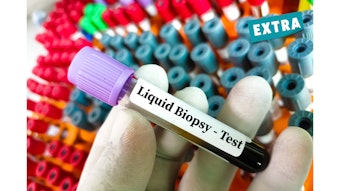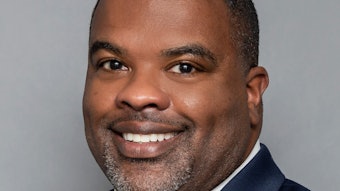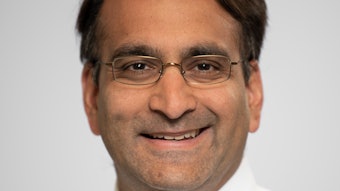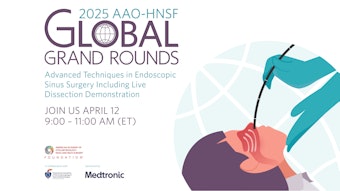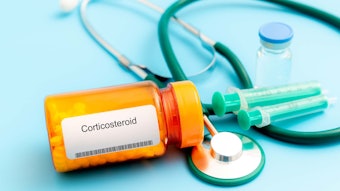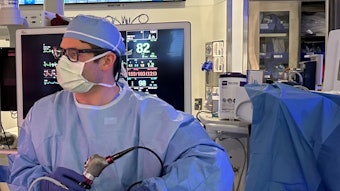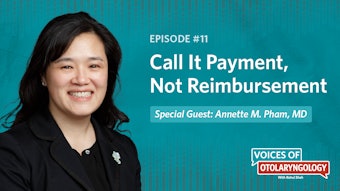Retrograde Cricopharyngeal Dysfunction
Patient experiences and collective knowledge-sharing are reshaping traditional pathways of medical science exploration.
Nancy Jiang, MD, and Andrew G. Tritter, MD, on behalf of the Voice Committee

How RCPD has come to public attention is unusual, as it deviates from the traditional scientific method of discovery, hypothesis formulation, and experimental validation. Instead, the dissemination of knowledge regarding this condition has largely been driven by patients, facilitated through internet searches and social media platforms such as Reddit, Facebook, TikTok, and YouTube. Here, we explore the origin, diagnosis, treatment, and future considerations of RCPD in light of its rapid rise in public awareness.
Defining RCPD
RCPD was first defined as a clinical entity in 2019 by Bastian et al, with the inability to belch, often since infancy, being the condition’s primary symptom.2 In addition to this, RCPD patients frequently experience symptoms such as abdominal bloating, chest discomfort, socially awkward gurgling sounds arising from the lower neck or chest, excessive flatulence, social embarrassment, and, in some cases, difficulty vomiting or fear of vomiting (emetophobia). The absence of dysphagia is another common finding in this population. Subsequent studies have confirmed the inability to burp as the cardinal feature of RCPD, observed in nearly all affected individuals, while the other associated symptoms can vary in their penetrance.3-6 Most importantly, these symptoms significantly affect patients’ quality of life, often leading to social anxiety and avoidance behaviors.2,7
Diagnostic Considerations
Currently, there are no widely accepted diagnostic tests for RCPD, and the condition is primarily identified based on clinical history and characteristic symptoms. It is not uncommon for patients with RCPD to report extensive prior diagnostic evaluations before reaching a laryngologist or comprehensive otolaryngologist familiar with the condition. These evaluations include esophagoscopy, X-ray swallow study, chest X-ray, or a proton pump inhibitor trial by our gastroenterology colleagues.2,7 These studies can occasionally yield results that support a diagnosis of RCPD (e.g., gastric air distension on chest X-ray or patulous esophagus on esophagram or EGD) but by themselves are not diagnostic for the condition.
Recent research efforts have sought to establish objective diagnostic criteria using high-resolution impedance manometry (HRIM). Studies employing the carbonated drink provocation test—a test in which patients rapidly ingest a large volume of carbonated water—have revealed distinctive manometric patterns in individuals with RCPD. These findings include oscillatory air movement within the esophagus, gaseous gastroesophageal reflux with secondary peristalsis, increased upper esophageal sphincter (UES) pressures, and ineffective esophageal motility.8,9 Although these data suggest that HRIM could serve as a definitive diagnostic tool for RCPD in the future, the specific utility of more invasive testing like this in the face of highly specific clinical symptoms remains to be defined.
Treatment Approaches
The primary treatment for RCPD is botulinum toxin injection into the cricopharyngeus muscle, a procedure performed either in the operating room or as an office-based intervention using electromyography (EMG) guidance.2,3,5,10-12 Botulinum toxin temporarily weakens the cricopharyngeal muscle, facilitating belching and relieving associated symptoms. The optimal dosage remains an area of debate, with reported doses ranging from 25 to 100 units.10 Notably, a case report has documented symptom resolution with as little as 10 units13, though most studies report dosages of at least 50 to 100 units.2,3,10
A positive response to botulinum toxin is considered both diagnostic and therapeutic; patients who experience symptom relief following injection are considered to have RCPD. The treatment is highly effective, with studies reporting an 80% success rate at six months post-injection.10,14 Since the effects of botulinum toxin typically wear off after three to four months, the sustained improvement in symptoms beyond this time frame suggests that most of these individuals are using the treatment effect to retain the ability to burp.
Adverse Effects and Treatment Limitations
As with any medical intervention, botulinum toxin treatment for RCPD is not without risks. The most frequently reported adverse effect is transient dysphagia, with incidence rates ranging from 30% to 75%.5,22 Some patients also experience regurgitation or an exacerbation of underlying acid reflux symptoms. When performed as an in-office procedure, there is a heightened risk of botulinum toxin diffusion to the posterior cricoarytenoid muscle, potentially impairing vocal fold abduction and leading to breathing difficulties. This complication has been reported in approximately 39% of patients who undergo the office-based approach.10-12
Despite the high success rate of this treatment, approximately 20% of patients experience recurrent symptoms and require additional intervention. For these individuals, repeat injections can often be beneficial. Cricopharyngeal myotomy has also been explored as a more definitive surgical intervention for these refractory cases. Although the few reported cases describing this procedure for the treatment of refractory RCPD have demonstrated efficacy, further research is still necessary to determine its long-term efficacy, safety, and role in the treatment algorithm for this condition.15
Demographic and Epidemiological Considerations
RCPD is predominantly encountered in young adults, with an average age of diagnosis around 30 years. A systematic review found an equal gender distribution, with approximately 51.1% of patients identified as male.16 The condition has been documented in multiple countries outside the United States, including Australia, Belgium, Canada, France, Italy, the United Kingdom, and many others, suggesting a widespread incidence across different populations.
Although it is mainly young adults who seek treatment, increasing awareness has led to recognition of the condition in pediatric populations.17-19 The youngest reported patient to undergo botulinum toxin treatment for RCPD was four years old, and significant symptomatic improvement was noted after treatment in that case.20 This suggests that intervention even at a young age can be beneficial, possibly preventing many years of associated symptoms, but further studies are needed to assess long-term outcomes in pediatric patients.
The Impact of Social Media on Medical Awareness
One of the most fascinating aspects of RCPD is how awareness of the condition has spread. Unlike most medical discoveries, which emerge through a process of clinical observation, hypothesis formulation, and experimental validation, the recognition of RCPD has been primarily driven by patients themselves. Online communities such as the Reddit forum “r/noburp” (established in 2014) and the Retrograde Cricopharyngeus Dysfunction Group on Facebook (established in 2020) have played a pivotal role in disseminating information in the English Language, leading to increased self-diagnosis and patient-driven medical inquiries.21
Social media platforms such as TikTok and YouTube have further accelerated public awareness, with viral videos discussing symptoms and treatment experiences. This phenomenon underscores the evolving landscape of medicine in the internet era, where patient experiences and collective knowledge-sharing are reshaping traditional pathways of medical science exploration.
Future Directions and Unanswered Questions
Despite the significant progress made in understanding and treating RCPD, several questions remain unanswered. First, there is a need to further refine our diagnostic approach. The development of a standardized diagnostic screening instrument or the potential use of HRIM could facilitate more accurate identification of RCPD, particularly in less straightforward cases. Second, the ideal dosage of botulinum toxin remains unclear. Although most patients tolerate the transient side effects from their injection without significant difficulty, there are still some who struggle. Refining the dosing strategy could help minimize these side effects by allowing for a lower dosage, while still achieving the desired therapeutic response. Third, we still have a limited understanding of the underlying pathophysiology of this condition. The fact that most patients experience symptomatic relief long after their botulinum toxin injection has worn off suggests some form of underlying modulation to an otherwise incompletely functional belch reflex. Fourth, there is a vacuum in knowledge of nonsurgical alternatives to treatment.
Given that there appears to be some level of voluntary muscle control in the cricopharyngeus muscle that is being acquired from treatment, our speech therapy colleagues may be able to help assist in symptom management through behavioral therapies targeting the upper esophageal sphincter. Lastly, given that most patients self-diagnose after learning about the condition online, it is essential for medical professionals to be well-informed about RPCD. In an arena where patients frequently report barriers to receiving care, we owe it to our patients to ensure that their voices are heard.
References
- Hunter N, Wright A, Jin V, Tritter A. Retrograde Cricopharyngeal Dysfunction: A Google Search Analysis. Otolaryngol Head Neck Surg. 2024 Dec;171(6):1808-1815. doi: 10.1002/ohn.1022. Epub 2024 Oct 16. PMID: 39413313.
- Bastian RW, Smithson ML. Inability to Belch and Associated Symptoms Due to Retrograde Cricopharyngeus Dysfunction: Diagnosis and Treatment. OTO Open. 2019 Mar 15;3(1):2473974X19834553. doi: 10.1177/2473974X19834553. PMID: 31236539; PMCID: PMC6572913.
- Karagama Y. Abelchia: inability to belch/burp-a new disorder? Retrograde cricopharyngeal dysfunction (RCPD). Eur Arch Otorhinolaryngol. 2021 Dec;278(12):5087-5091. doi: 10.1007/s00405-021-06790-w. Epub 2021 Apr 24. PMID: 33893849; PMCID: PMC8553696.
- Wajsberg B, Hoesli RC, Wingo ML, Richardson BE, Bastian RW. Retrograde Cricopharyngeus Dysfunction: An Orphan Disease? Am J Gastroenterol. 2022 Sep 1;117(9):1539. doi: 10.14309/ajg.0000000000001888. PMID: 35973172.
- Siddiqui SH, Sagalow ES, Fiorella MA, Jain N, Spiegel JR. Retrograde Cricopharyngeus Dysfunction: The Jefferson Experience. Laryngoscope. 2023 May;133(5):1081-1085. doi: 10.1002/lary.30346. Epub 2022 Aug 23. PMID: 36054518.
- Arnaert S, Arts J, Raymenants K, Baert F, Delsupehe K. Retrograde Cricopharyngeus Dysfunction, a New Motility Disorder: Single Center Case Series and Treatment Results. J Neurogastroenterol Motil. 2024 Apr 30;30(2):177-183. doi: 10.5056/jnm23099. PMID: 38576368; PMCID: PMC10999848.
- Miller ME, Lina I, O'Dell K, Akst LM. Experiences of Patients Living with Retrograde Cricopharyngeal Dysfunction. Laryngoscope. 2024 May;134(5):2136-2143. doi: 10.1002/lary.31157. Epub 2023 Nov 2. PMID: 37916795.
- Raymenants K, Vulsteke F, Vanuytsel T, Rommel N, Baert F, Delsupehe K, Bohyn A, Tack J, Arts J. Diagnosis of Retrograde Cricopharyngeus dysfunction using high resolution impedance manometry and comparison with control subjects. Clin Gastroenterol Hepatol. 2025 Jan 29:S1542-3565(25)00070-9. doi: 10.1016/j.cgh.2024.12.014. Epub ahead of print. PMID: 39892633.
- Anderson J, Hu H, Bakhsh Z, Liu L. Prospective Evaluation of Abelchia/RCPD Patients: Abnormalities in High-Resolution Esophageal Manometry. Laryngoscope. 2025 Feb;135(2):758-762. doi: 10.1002/lary.31811. Epub 2024 Oct 1. PMID: 39352024; PMCID: PMC11725711.
- Miller ME, Lina I, Akst LM. Retrograde Cricopharyngeal Dysfunction: A Review. J Clin Med. 2024 Jan 11;13(2):413. doi: 10.3390/jcm13020413. PMID: 38256547; PMCID: PMC10817096.
- Wajsberg B, Hoesli RC, Wingo ML, Bastian RW. Efficacy and Safety of Electromyography-Guided Injection of Botulinum Toxin to Treat Retrograde Cricopharyngeus Dysfunction. OTO Open. 2021 Feb 2;5(1):2473974X21989587. doi: 10.1177/2473974X21989587. PMID: 33598599; PMCID: PMC7863157.
- Doruk C, Pitman MJ. Lateral Transcervical In-office Botulinum Toxin Injection for Retrograde Cricopharyngeal Dysfunction. Laryngoscope. 2024 Jan;134(1):283-286. doi: 10.1002/lary.30871. Epub 2023 Jul 8. PMID: 37421251.
- Pavesi L, Balzano C, Mauramati S, Giudice C, Fresia M, Todisco M, Alfonsi E, Cosentino G. Retrograde Cricopharyngeus Dysfunction effectively treated with low dose botulinum toxin. A case report from Italy. Front Neurol. 2023 Aug 9;14:1238304. doi: 10.3389/fneur.2023.1238304. PMID: 37621856; PMCID: PMC10444988.
- Hoesli RC, Wingo ML, Bastian RW. The Long-term Efficacy of Botulinum Toxin Injection to Treat Retrograde Cricopharyngeus Dysfunction. OTO Open. 2020 Jun 29;4(2):2473974X20938342. doi: 10.1177/2473974X20938342. PMID: 32647778; PMCID: PMC7325547.
- Bastian RW, Hoesli RC. Partial Cricopharyngeal Myotomy for Treatment of Retrograde Cricopharyngeal Dysfunction. OTO Open. 2020 Apr 16;4(2):2473974X20917644. doi: 10.1177/2473974X20917644. PMID: 32328538; PMCID: PMC7163242.
- Jönsson CH, Plaschke CC. Retrograde cricopharyngeal dysfunction and treatment with botulinum toxin: a systematic review. Eur Arch Otorhinolaryngol. 2024 Sep;281(9):4495-4505. doi: 10.1007/s00405-024-08619-8. Epub 2024 Apr 2. PMID: 38564007.
- Hoffman MR, Schiffer B, Patel RA, Smith ME. "I've never been able to burp": Preliminary description of retrograde cricopharyngeal dysfunction in children. Int J Pediatr Otorhinolaryngol. 2022 Oct;161:111261. doi: 10.1016/j.ijporl.2022.111261. Epub 2022 Aug 4. PMID: 35939873.
- Mitchell M, Denna T, Holdgraf R. The kid who couldn't burp: the management of a pediatric case of retrograde cricopharyngeal dysfunction. Proc (Bayl Univ Med Cent). 2023 Sep 7;36(6):755-757. doi: 10.1080/08998280.2023.2255510. PMID: 37829230; PMCID: PMC10566408.
- Dorfman L, El-Chammas K, Mansi S, Graham K, Kaul A. Pediatric retrograde cricopharyngeal dysfunction diagnosed by high-resolution impedance manometry. J Pediatr Gastroenterol Nutr. 2024 May;78(5):1098-1107. doi: 10.1002/jpn3.12193. Epub 2024 Mar 22. PMID: 38516909.
- Treating Retrograde Cricopharyngeal Dysfunction in a Young Child (online patient story); Oct 2024; https://med.uth.edu/orl/2024/10/14/treating-retrograde-cricopharyngeal-dysfunction-in-a-young-child/
- Miller ME, Lina I, O'Dell K, Akst LM. Experiences of Patients Living with Retrograde Cricopharyngeal Dysfunction. Laryngoscope. 2024 May;134(5):2136-2143. doi: 10.1002/lary.31157. Epub 2023 Nov 2. PMID: 37916795.
- Yousef A, Krause A, Yadlapati R, Sharma P, Weissbrod PA. Upper Esophageal Sphincter and Esophageal Motility Pathology on Manometry in Retrograde Cricopharyngeal Dysfunction. Otolaryngol Head Neck Surg. 2024 Apr 8. doi: 10.1002/ohn.735. Epub ahead of print. PMID: 38587015.


